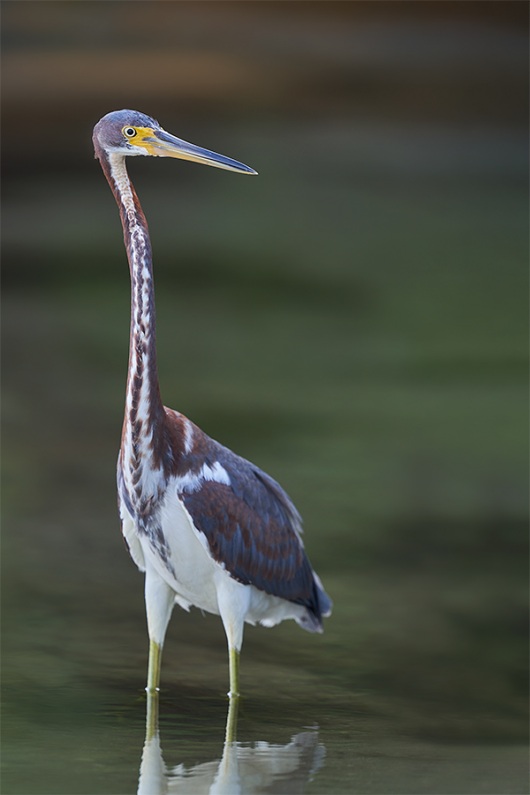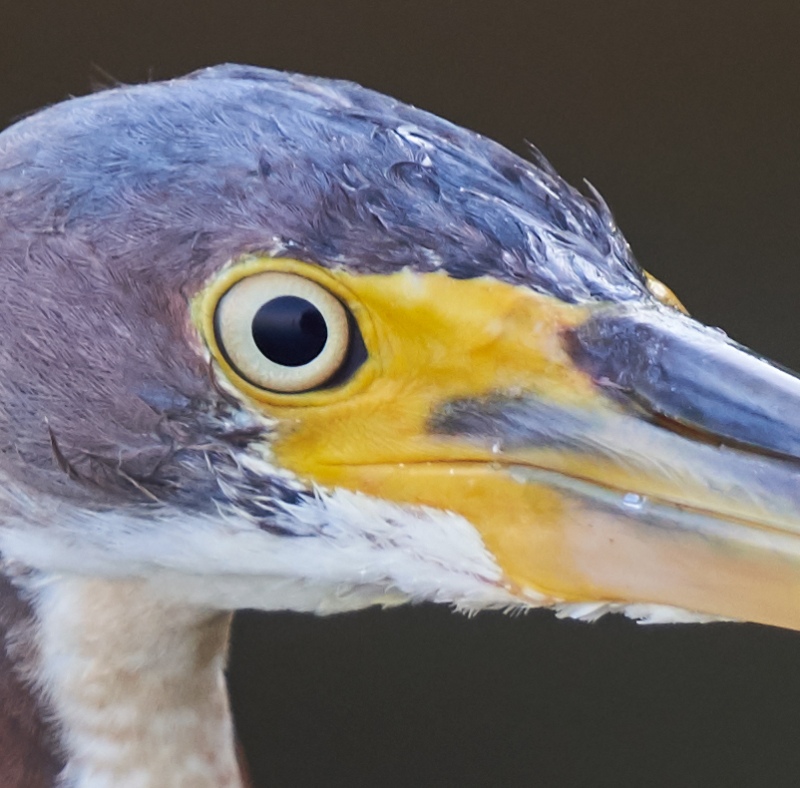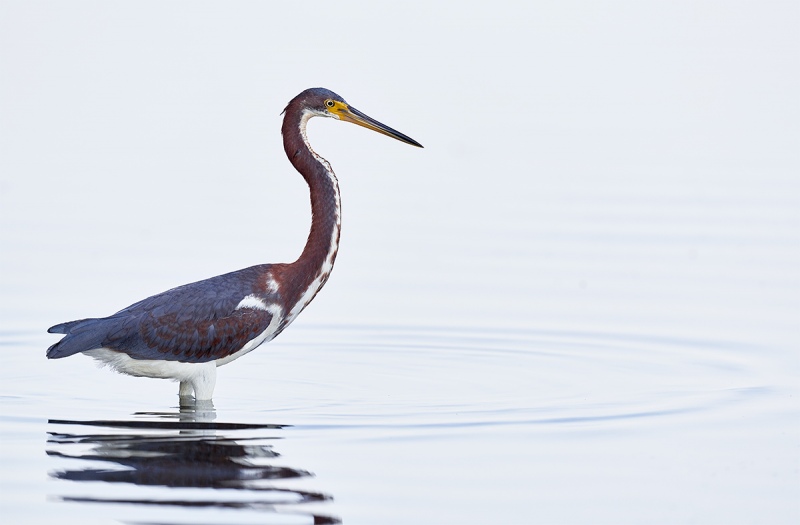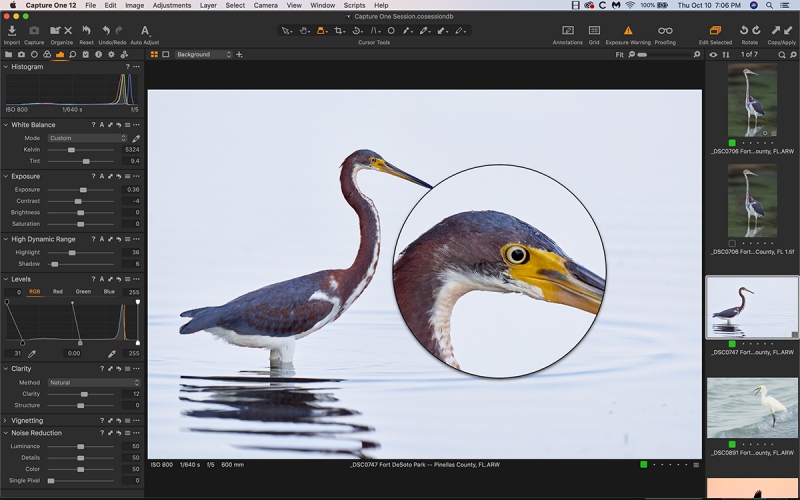What’s Up
I’ve been swimming and walking and continuing with the intermittent fasting program and am feeling great. On Friday, I felt so good that I swam twice! And I have been working on the D850 video and e-guide.
I got my SONY 200-600 from Bedford’s on Thursday afternoon and took it down to the lake on Friday morning. I glanced at the images and all that I can say is that they are scary-sharp! In Monday’s blog post I will share my initial impressions of the 2-6. I will say that they are favorable.
There is so much exciting stuff going on and I have so many images and lessons to share that I feel I should be doing a blog post every day: Galapagos images; DeSoto images: the skinny on the SONY 600 f/4GM with the 1.4 and 2X TCs; taking-care-of-SONY basics; and so, so much more. But I promised myself to leave at least some time for myself … Anyhoo, there will be lots more great stuff here every other day.
Your Favorite?
Please leave a comment and let us know whether you like the image with the dark background or the high key image better. And why.
Galapagos 2020?
If you are interested in learning about a possible Galapagos Photo-Cruise of a Lifetime, September 29-October 13 on the boat (travel dates: 27 SEPT to Guayaquil and fly home on 14 OCT) please get in touch via e-mail. I will need at least eight deposits by December 1, 2019. Details will be announced here soon.
Selling Your Used Photo Gear Through BIRDS AS ART
Selling your used (or like-new) photo gear through the BAA Blog is a great idea. We charge only a 5% commission. One of the more popular used gear for sale sites charged a minimum of 20%. Plus assorted fees! Yikes. They went out of business. And e-Bay fees are now up to 13%. The minimum item price here is $500 (or less for a $25 fee). If you are interested please scroll down here or shoot us an e-mail with the words Items for Sale Info Request cut and pasted into the Subject line :). Stuff that is priced fairly — I offer pricing advice to those who agree to the terms — usually sells in no time flat. Over the past year, we have sold many dozens of items. Do know that prices on some items like the EOS-1D Mark IV, the old Canon 100-400, the old 500mm, the EOS-7D, and the 7D Mark II and the original 400mm DO lens have been dropping steadily. Most recently the price of used Canon 600mm f/L IS II lenses have been dropping like a rock with the introduction of the 600 III. You can always see the current listings by clicking here or on the Used Photo Gear tab on the orange-yellow menu bar near the top of each blog post page.
As used gear sales have slowed a bit in recent months — especially with dSLR bodies, there are lots of great buys right now on the Used Gear Page.
Canon EF 500mm f/4L IS II USM Lens
Larry Master, multiple IPT participant who will be joining me again on the upcoming Bosque IPT, is offering a Canon EF 500mm f/4.0L IS II USM lens in like-new condition for $6,199.00. The sale includes the front lens cover, the rear lens cap, the lens strap, the lens truck with keys, the original product box, an Aquatech silicone lens cap, a Lenscoat, an off-brand low foot, and insured ground shipping via major courier to lower-48 US addresses only. Your item will not ship until your check clears unless other arrangements are made.
Please contact Larry via e-mail or by phone at 1-518-645-1545 Eastern time.
The 500mm f/4 super-telephoto lenses have long been the world’s most popular for birds, nature, wildlife, and sports for many decades. Canon’s Series II version is light, fast, super-sharp, and, in competent hands, produces amazing images with both the 1.4X and 2X III TCs. The 500 II is relatively small, easily hand-holdable for some folks, and is much easier to travel with, focuses closer than, and costs a lot less than the 600 II. The lighter 600 III costs an astounding $12,999.00. Lastly, and you might find this amazing, the magnification for the 500 II is the same as it is for the 600 II: .15X. How is that possible? Magnification is calculated at the minimum focusing distance of the lens — 12.14 feet (3.7 meters) for the 500 II and 14.77 feet (4.5 meters) for the 600 II. Simply put, the 500 II focuses more than two feet closer than the 600 II. The seller for the last one that sold here had five calls the first day; the first four folks quibbled on price. The fifth one jumped right on it … Please do not tarry if you are seriously interested in Larry’s lens as it too should sell quite quickly. Or not 🙂 As the 500 II goes for $8999.00 new, you will be getting a practically new copy and saving a very nice $2,800.00! I loved my 500 II. artie
Canon EF 70-200mm f/2.8L IS II USM Lens
Sold!
Multiple IPT participant Larry Master, who will be joining me again on the upcoming Bosque IPT, is offering a Canon EF 70-200mm f/2.8L IS II USM lens in like-new condition for the BAA record-low price of $899.00. The sale includes the front and rear lens caps, the original product box, the lens case, a LensCoat, and insured ground shipping via major courier to US lower-48 addresses only. Your item will not ship until your check clears unless other arrangements are made.
Please contact Larry via e-mail or by phone at 1-518-645-1545 Eastern time.
The 70-200mm f/2.8L IS II lens, the world’s most popular mid-range telephoto, is amazingly versatile. When I used Canon I made zillions of great images with it. It works well with both the 1.4X III and the 2X III TCs, even with the 7D II! It is easily hand-holdable. It is great for tame birds, landscapes, urbex, indoor stuff like concerts and recitals, and just about anything you want to photograph. A new 70-200 II currently sells for $1799.00 so you can save a cool $900.00 by grabbing Larry’s practically new copy asap. artie
Canon EOS 5D Mark IV
Sale pending
Multiple IPT participant Larry Master, who will be joining me again on the upcoming Bosque IPT, is offering a Canon EOS 5D Mark IV in like-new condition with 3200 actuations for $2099.00. The sale includes the original box and everything that came in it including the front body cap, the strap, and also insured ground shipping via major courier to lower-48 US addresses only. Your item will not ship until your check clears unless other arrangements are made.
Please contact Larry via e-mail or by phone at 1-518-645-1545 Eastern time.
The high megapixel 5D Mark IV was my favorite Canon camera body. The AF system was superb and the files large, detailed and luscious. I used mine with all of my favorite Canon lenses including the 100-400 II, the 500 f/4L IS II, and the 600 f/4L IS II. With the two super-telephotos, I consistently made sharp images with both the 1.4X III and the 2X III TCs. The camera, still in production, sells for $2799.00. artie
Canon EOS 70D
Multiple IPT participant Larry Master, who will be joining me again on the upcoming Bosque IPT, is offering a Canon EOS 70D in like-new condition for $499.00. The sale includes the original box and everything that came in it including the front body cap, the strap, and also insured ground shipping via major courier to lower-48 US addresses only. Your item will not ship until your check clears unless other arrangements are made.
Please contact Larry via e-mail or by phone at 1-518-645-1545 Eastern time.
I know several folks on the blog who own and use the 70D for nature and bird photography and are quite happy with the results. And you cannot beat the price! artie
Four-lens Canon EF-S Bundle
Price Reduced $150.00 on July 13, 2019.
IPT veteran Mark Overgaard is also offering a four-lens EF-S bundle, all in near-mint to like-new condition for the crazy-low price of $799.00 (was $949.00). EF-S lenses work only with Canon crop sensor bodies such as the 7D, the 7D Mark II, the 70D, and the 80D.
Here are the lenses:
- Canon EF-S 10-22mm f/3.5-4.5 USM
- Canon EF-S 17-55mm f/2.8 IS USM
- Canon EF-S 18-135mm f/3.5-5.6 IS STM
- Canon EF-S 60mm f/2.8 Macro USM
The sale includes all front and rear lens caps and hoods and insured ground shipping by UPS or FedEx to the lower 48 states only. For all but the 18-135mm lens, the original Canon box is also included.
Please contact Mark via e-mail.
If you are sold on Canon crop factor bodies like the 7D Mark II (see the work of Dan Cadieux), and are looking for some supplementary lenses, this package represents an incredible deal. These four lenses sell new for $1796.00 so you can save $997 by grabbing this great collection now. artie
IPT Updates
- The Return to Bosque Reduced Rate Scouting IPT. NOV 26-28, 2019 — 3 FULL DAYS: $1199.00. Limit: 8/Openings: 6. Extra Day Options: Join me for one to three extra In-the-Field Days at the end of the IPT as follows: FRI 29 NOV, SAT 30 NOV, and SUN 1 DEC for only $300.00/day.
- The 2020 San Diego 4 1/2-DAY BIRDS AS ART Instructional Photo-Tour (IPT) WED JAN 8, 2020 thru and including the morning session on SUN JAN 12: 4 1/2 days: $2099.(Limit: 8/Openings: 5)
BIRDS AS ART
BIRDS AS ART is registered in the U.S. Patent and Trademark Office.
Money Saving Reminder
If you need a hot photo item that is out of stock at B&H, would enjoy free overnight shipping, and would like a $50 discount on your first purchase over $1000.00, click here to order and enter the coupon code BIRDSASART at checkout. If you are looking to strike a deal on Canon or Nikon gear (including the big telephotos) or on a multiple item order, contact Steve Elkins via e-mail or on his cell at (479) 381-2592 (Eastern time) and be sure to mention your BIRDSASART coupon code and use it for your online order. Steve has been great at getting folks the hot items that are out of stock at B&H. Those include the SONY a7r IV, the SONY 200-600, the SONY 600mm f/4 GM, and the Nikon 500mm PF. Steve is eager to please.


Gear Questions and Advice
Too many folks attending BAA IPTs and dozens of photographers whom I see in the field and on BPN, are–out of ignorance–using the wrong gear especially when it comes to tripods and more especially, tripod heads… Please know that I am always glad to answer your gear questions via e-mail. Those questions might deal with systems, camera bodies, accessories, and/or lens choices and decisions.
|
|
|
This image was created on September 26, my scouting just before the Fort DeSoto IPT. I used the Induro GIT 304/FlexShooter Pro-mounted Sony FE 600mm f/4 GM OSS lens, the Sony FE 1.4x Teleconverter, and the 61-MP Sony Alpha a7R IV Mirrorless Digital Camera Body. ISO 400 (should have been ISO 800). Exposure determined by Zebras with ISO on the rear dial: 1/160 sec. at f/5.6 in Manual mode was about -2/3 stop on the analog scale. AWB at 6:04pm in full shade late on a sunny afternooon. Upper Left Zone Continuous/tracking AF was active at the moment of exposure. Image #1: Tricolored Heron juvenile with green reflections background |
The Situation
On my scouting afternoon before the last DeSoto IPT with multiple IPT participant Shonagh Adelman along for the ride, we were photographing at one of my favorite DeSoto afternoon locations. We noticed a huge feeding spree tight against a mangrove forest on a curving spit of land. There were about two hundred young pelicans herding bait with a few dozen wading birds including Great and Snowy Egrets and the single young Tricolored Heron pictured in today’s two featured images. I thought that if we hugged the shore we might be able to get somewhere near sun angle. But with my first step, my left foot sank deep into the muck so I quickly abandoned that approach. With the seemingly impenetrable mangrove forest on our left, it looked as if we were defeated. Refusing to give up so easily, I poked my head into the forest and was amazed to see a pretty decent trail. We walked the path for about 100 yards and then made our way to an opening along the edge. The pelicans had already moved off, but the wading birds hung around still feeding. The bottom was a lot firmer and the birds were typically DeSoto-tame.
Working With Mega High-Mega-pixel Cameras …
For Image #1 — in retrospect — I should have removed the teleconverter or — at the least — gone to ISO 800 for an additional stop of shutter speed. When working with super-high mega-pixel camera bodies like the SONY a7r IV and the Canon 5DsR, any sharpness-technique errors that result in lens-shake will be exacerbated and the effects of (subject) motion-blur will be more evident than they would be than when working with cameras that produce smaller RAW files. Why? Any movement at all will affect more of the tightly packed pixels … So with the 7r IV, there will be times when I need to go to higher shutter speeds (and thus, correspondingly higher ISO settings).
In short, lower mega-pixel cameras are more forgiving across the board with sharpness errors. And many folks believe that the lower mega-pixel files are better with noise as well. But the apparent gains with high-ISO performance when comparing larger image files with smaller image files are misleading. If you take an image from a high mega-pixel camera body and resize it in Photoshop down to the pixel dimensions of a lower mega-pixel file — Image > Image size w/Bicubic Sharper (Reduction) — the image originally from the higher mega-pixel camera will actually be less noisy and will often exhibit better dynamic range as well. (Thanks again to Patrick Sparkman for helping me to understand this important concept.)
|
|
Image #2: An unsharpened 100% crop of Tricolored Heron with green reflections background |
An Unsharpened 100% Crop
Sharpness at 840mm even at relatively slow shutter speeds (1/160 sec) is astounding. Note that wet birds will always show less fine feather detail than dry birds, especially in soft light. And do remember that this 100% crop is unsharpened.
|
|
|
This image of the same bird was also created on September 26, my scouting day just before the Fort DeSoto IPT. I used the Induro GIT 304/FlexShooter Pro-mounted Sony FE 600mm f/4 GM OSS lens and the 61-MP Sony Alpha a7R IV Mirrorless Digital Camera Body. ISO 800. Exposure determined by Zebras with ISO on the rear dial: 1/640 sec. at f/5 in Manual mode was about +2 stops on the analog scale. AWB at 6:18pm in open shade late on a sunny afternooon. Flexible Spot (S) Continuous/tracking AF was active at the moment of exposure. The selected AF point was placed on the bird’s eye. Click on the image to see a larger, inexplicably sharper-looking version. Image #3: Tricolored Heron juvenile standing in white water |
An Exposure Lesson
Image #1 was created at about -2/3 stop. Why? Because the dark water influenced the meter to open up thus endangering the white feathers on the belly and otherwise scattered throughout the bird’s plumage. I needed to under-expose from the meter reading suggested by the camera to prevent over-exposing the white feathers. With SONY, however, I do not use this line of thinking to come up with the right exposure; I simply adjust the exposure parameters (shutter speed, aperture, and ISO) until I see some faint Zebras on the whitest feathers.
Image #3 on the other hand, was created at about +2 stops. Why? The white water will influence the meter to under-expose by a mile. The relatively dark young heron has little influence on the meter as it occupies perhaps five to ten percent of the frame. So I needed to open up about two stops to prevent under-exposing the heron. With SONY my approach for these high key images is to adjust the exposure parameters so that I see lots of Zebras on the white water. Again, this prevents under-exposing the heron.
As I say here often, in low light, when the scene averages to a very light tone, the meters on all of our high-end digital cameras are very dumb … (They do a lot better when the sun is out …)
AF Considerations (all systems)
Whether you are using Canon, Nikon, SON, or something else, the following is generally true: If you opt to focus with a small or large array, you will enjoy greater compositional freedom by being able to move the subject around a bit in the frame at the expense of some images not being as sharp as others … If you go to single-point AF and can get the selected AF point on the bird’s eye or face, you will enjoy greater AF accuracy. But if the bird is moving, it can be difficult to get the selected AF point on the bird’s eye or face and to then maintain focus …
With today’s two SONY images I went with Upper Left Zone for Image #1 so that I could quickly get the composition that I wanted. But several of the images in this series were not sharply focused. With Image #2 the young heron was standing still for a few moments and gave me time to go to single-point AF and to get the selected AF point on the bird’s face.
Life is about choices. There is no magic bullet when considering the AF options here. You practice and experiment and go with what you think will work best.
|
|
Image #4: Capture One screen capture |
Editing My SONY Images with Capture One
As mentioned here before, when I view SONY images in Photo Mechanic, the small embedded JPEGs do not allow me to enlarge the image enough to judge critical sharpness. To do that, I go to Capture One Pro 12 and use the (adjustable) Loupe (P) to enlarge as needed. I use Large for the Loupe size and 100% for the magnification. I will be doing a blog post here soon on exactly how I set up Capture One so that I can do my editing quickly and efficiently.
The Capture One Screen Capture
As regular readers know, I do pretty much all of my SONY and Nikon RAW conversions in Capture One Pro 12. If you enlarge the screen capture, you can see all of the adjustments I made to the RAW file before converting it and bringing it into Photoshop as a TIF file.
If In Doubt …
If you are in doubt about using the BAA B&H affiliate link correctly, you can always start your search by clicking here. Please note that the tracking is invisible. Web orders only. Please, however, remember to shoot me your receipt via e-mail.


Please Remember to use my Affiliate Links and to Visit the BAA Online Store 🙂
To show your appreciation for my continuing efforts here, we ask, as always, that you get in the habit of using my B&H affiliate links on the right side of the blog or Bedfords, for all of your photo and electronics purchases. Please check the availability of all photographic accessories in the New BIRDS AS ART Online Store, especially the Mongoose M3.6 tripod head, Wimberley lens plates, Delkin flash cards and accessories, and LensCoat stuff.
As always, we sell only what I have used, have tested, and can depend on. We will not sell you junk. We know what you need to make creating great images easy and fun. And please remember that I am always glad to answer your gear questions via e-mail.
I would, of course, appreciate your using our B&H affiliate links or Bedfords for all of your major gear, video, and electronic purchases. For the photographic stuff mentioned in the paragraph above, and for everything else in the new store, we, meaning BAA, would of course greatly appreciate your business. Here is a huge thank you to the many who have been using our links on a regular basis and those who will be visiting the New BIRDS AS ART Online Store as well.
Be sure to like and follow BAA on Facebook by clicking on the logo link upper right.
Typos
In all blog posts and Bulletins, feel free to e-mail or to leave a comment regarding any typos or errors. Just be right :).



















Image #2 certainly is sharp at 100% crop. I’m still undecided on Nikon or Sony as an upgrade to my gear as I’m in search of better AF tracking. However, I’ve been reading and watching videos that seem to indicate Sony cameras have a sensor dust issue…much more so than dslrs. What’s your feeling here Artie?
Hi Paul,
I’ve had zero problems with sensor dust by following a simple procedure. Stay-tuned to the blog 🙂
with love, a
I find it interesting that we still have to go through exposure compensation — adding exposure for bright backgrounds, subtracting it for dark — with our modern cameras with evaluative meters. I thought the whole point of the evaluative meter was to detect and automatically compensate for such backgrounds and other difficult lighting conditions — i.e., the “evaluate” in “evaluative.” When we do it ourselves, manually, we might as well be using the old center-weighted metering of the SLRs of the 1970s!
Evaluative and Matrix and Multi metering are all a bit better than center-weighted when the sun is shining but on cloudy and overcast days they simply do not work. For the most part, those three terms are advertising hype.
with love, artie
I like the high key shot due to the ripples in water (big circle around the bird). Better composition and a for me.
Thanks, Anthony.
with love, artie
Why not use spot metering vs. matrix? I have been experimenting with this (Nikon D850) in high contrast scenes, getting good results on static subjects and mixed results on bird in flight or other fast moving subjects – much like spot vs. group or area AF. My current thinking is to pair spot AF with spot metering, and multipoint AF with matrix metering.
I understand that metering systems “think” all scenes should average to 50% gray. My brain thinks this is not always the case.
Hi Dagny,
It does not matter which metering you use. The idea is to get a good amount of data in the right-most box of the histogram. That said, spot metering is covered in detail in the original The Art of Bird Photography. It sounds as if you need to order a copy and study the chapter on exposure. As I have written often, 99% of the folks who use spot metering (or handheld light meters) have no idea as to how to use either to get the right exposure …
If you point your spot meter at any large area of tonality without any compensation then that area will be rendered as a medium tone with approximately 17% (not 50%) reflectivity. Trying to use spot metering for flight photography is 100% absurd.
Lastly, there is absolutely no need to rely on spot metering with digital photography.
with love, a